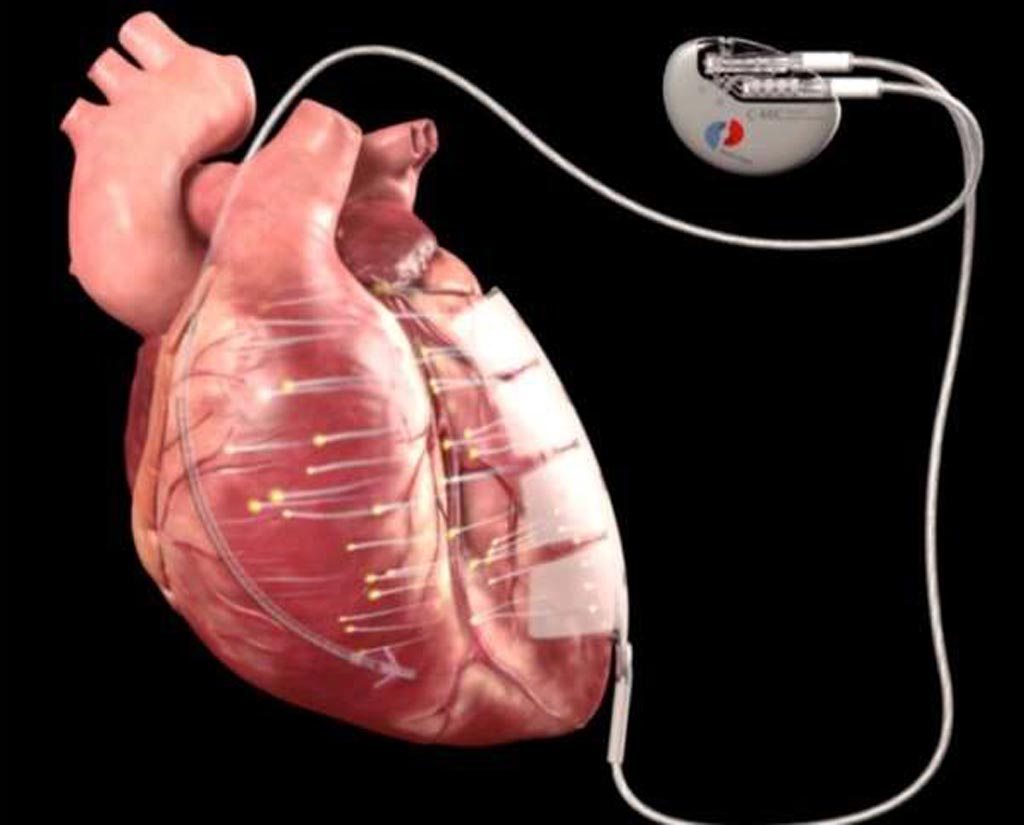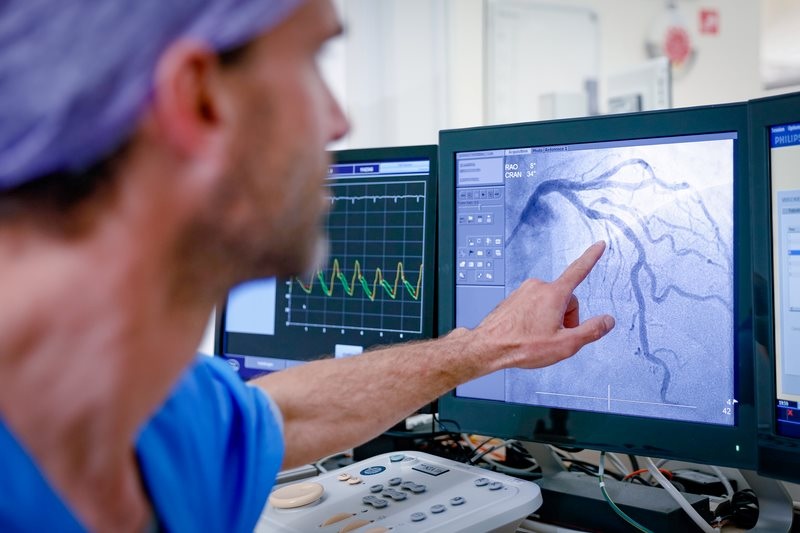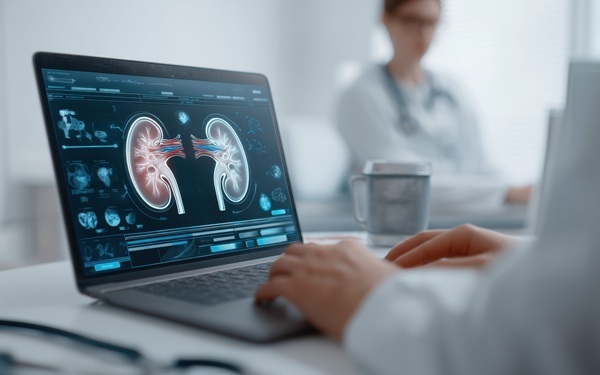Bioelectronic Therapy Device Exercises Heart Muscle
|
By HospiMedica International staff writers Posted on 22 Jul 2019 |

Image: The implanted device is designed to stimulate cell regeneration in cardiomyopathy (Photo courtesy of Berlin Heals).
A novel electroceutical device readjusts the myocardial electrical gradient in order to strengthen the weakened heart muscle of cardiomyopathy patients.
Under development by Berlin Heals (Berlin, Germany), C-MIC cardiac microcurrent therapy is based on an implanted pulse generator that exercises the heart muscle using electricity, thus stimulating it to renew itself. In a minimally invasive procedure, a small microcurrent pulse generator is implanted via two small incisions. Two electrodes exit the pulse generator, one taking the form of an extensive patch on the outside of the heart muscle, while the other is placed inside the left ventricle. The system is designed to stimulate the affected heart muscle, causing it to regenerate.
In a preclinical study at Hannover Medical School (Germany) involving 12 sheep with chronic systolic heart failure, the continuous microcurrent therapy was associated with a strong improvement of left ventricular ejection fraction (LVEF), indicating reversal of cardiac remodeling and reduced myocardial inflammation. A first in human study of the C-MIC device at the Medical University of Vienna (MedUni; Austria) revealed that after three months, the first patient treated showing initial signs of regeneration. The study was published in the April 2019 issue of The Journal of Heart and Lung Transplantation.
“The preliminary findings bring us real hope for cardiomyopathy patients. Microcurrent regeneration could bring us a step closer to the dream of being able to regenerate damaged organs,” said lead author Dominik Wiedemann, MD, of the MedUni division of cardiac surgery. “Particularly in times when donor organs are scarce, it is important to develop new effective treatment techniques to avoid major operations such as heart transplants as much as possible, as well as the subsequent immunosuppression that goes with them."
In dilative cardiomyopathy, the heart muscle becomes pathologically enlarged so that it can no longer contract sufficiently. Current treatments attempt to stabilize such heart failure patients for as long as possible by means of optimized drug treatment or specialized pacemakers. The treatment of last resort for terminal heart failure is a heart transplant or mechanical replacement using a left ventricular assist device (LVAD).
Related Links:
Berlin Heals
Hannover Medical School
Medical University of Vienna
Under development by Berlin Heals (Berlin, Germany), C-MIC cardiac microcurrent therapy is based on an implanted pulse generator that exercises the heart muscle using electricity, thus stimulating it to renew itself. In a minimally invasive procedure, a small microcurrent pulse generator is implanted via two small incisions. Two electrodes exit the pulse generator, one taking the form of an extensive patch on the outside of the heart muscle, while the other is placed inside the left ventricle. The system is designed to stimulate the affected heart muscle, causing it to regenerate.
In a preclinical study at Hannover Medical School (Germany) involving 12 sheep with chronic systolic heart failure, the continuous microcurrent therapy was associated with a strong improvement of left ventricular ejection fraction (LVEF), indicating reversal of cardiac remodeling and reduced myocardial inflammation. A first in human study of the C-MIC device at the Medical University of Vienna (MedUni; Austria) revealed that after three months, the first patient treated showing initial signs of regeneration. The study was published in the April 2019 issue of The Journal of Heart and Lung Transplantation.
“The preliminary findings bring us real hope for cardiomyopathy patients. Microcurrent regeneration could bring us a step closer to the dream of being able to regenerate damaged organs,” said lead author Dominik Wiedemann, MD, of the MedUni division of cardiac surgery. “Particularly in times when donor organs are scarce, it is important to develop new effective treatment techniques to avoid major operations such as heart transplants as much as possible, as well as the subsequent immunosuppression that goes with them."
In dilative cardiomyopathy, the heart muscle becomes pathologically enlarged so that it can no longer contract sufficiently. Current treatments attempt to stabilize such heart failure patients for as long as possible by means of optimized drug treatment or specialized pacemakers. The treatment of last resort for terminal heart failure is a heart transplant or mechanical replacement using a left ventricular assist device (LVAD).
Related Links:
Berlin Heals
Hannover Medical School
Medical University of Vienna
Latest Critical Care News
- Wearable Ultrasound Sensor Delivers Noninvasive Treatment Without Surgery
- Gel-Free ECG System to Transform Heart Health Diagnosis
- Biodegradable Patch Repairs Damaged Tissue After Heart Attack
- Magnetically Guided Microrobots to Enable Targeted Drug Delivery

- Smart Nanomaterials Detect and Treat Traumatic Brain Injuries Simultaneously
- Earlier Blood Transfusion Could Reduce Heart Failure and Arrhythmia in Heart Disease Patients
- 'Smart' Shirt Detects Epileptic Seizures in Real Time
- Skin Patch Measures Effectiveness of Flu/COVID Vaccines in 10 Minutes
- Complete Revascularization Reduces Risk of Death from Cardiovascular Causes
- Tiny Fish-Inspired Robots Navigate Through Body to Deliver Targeted Drug Therapy
- Coronary Artery Stenosis Could Protect Patients from Pulmonary Embolism Effects
- Sweat-Powered Sticker Turns Drinking Cup into Health Sensor
- Skin-Mounted 3D Microfluidic Device Analyzes Sweat for Real-Time Health Assessment
- New Therapeutic Brain Implants to Eliminate Need for Surgery
- Stem Cell Patch Gently Heals Damaged Hearts Without Open-Heart Surgery
- Biomaterial Vaccines to Make Implanted Orthopedic Devices Safer
Channels
Surgical Techniques
view channelNovel Endoscopy Technique Provides Access to Deep Lung Tumors
Detecting lung cancer early can save lives, but diagnosing small tumors deep in the outer regions of the lungs remains a major clinical challenge. Although CT scans frequently identify tiny suspicious... Read more
New Study Findings Could Halve Number of Stent Procedures
When a coronary artery becomes acutely blocked during a heart attack, opening it immediately is essential to prevent irreversible damage. However, many patients also have other narrowed vessels that appear... Read morePatient Care
view channel
Revolutionary Automatic IV-Line Flushing Device to Enhance Infusion Care
More than 80% of in-hospital patients receive intravenous (IV) therapy. Every dose of IV medicine delivered in a small volume (<250 mL) infusion bag should be followed by subsequent flushing to ensure... Read more
VR Training Tool Combats Contamination of Portable Medical Equipment
Healthcare-associated infections (HAIs) impact one in every 31 patients, cause nearly 100,000 deaths each year, and cost USD 28.4 billion in direct medical expenses. Notably, up to 75% of these infections... Read more
Portable Biosensor Platform to Reduce Hospital-Acquired Infections
Approximately 4 million patients in the European Union acquire healthcare-associated infections (HAIs) or nosocomial infections each year, with around 37,000 deaths directly resulting from these infections,... Read moreFirst-Of-Its-Kind Portable Germicidal Light Technology Disinfects High-Touch Clinical Surfaces in Seconds
Reducing healthcare-acquired infections (HAIs) remains a pressing issue within global healthcare systems. In the United States alone, 1.7 million patients contract HAIs annually, leading to approximately... Read moreHealth IT
view channel
EMR-Based Tool Predicts Graft Failure After Kidney Transplant
Kidney transplantation offers patients with end-stage kidney disease longer survival and better quality of life than dialysis, yet graft failure remains a major challenge. Although a successful transplant... Read more
Printable Molecule-Selective Nanoparticles Enable Mass Production of Wearable Biosensors
The future of medicine is likely to focus on the personalization of healthcare—understanding exactly what an individual requires and delivering the appropriate combination of nutrients, metabolites, and... Read moreBusiness
view channel
Philips and Masimo Partner to Advance Patient Monitoring Measurement Technologies
Royal Philips (Amsterdam, Netherlands) and Masimo (Irvine, California, USA) have renewed their multi-year strategic collaboration, combining Philips’ expertise in patient monitoring with Masimo’s noninvasive... Read more
B. Braun Acquires Digital Microsurgery Company True Digital Surgery
The high-end microsurgery market in neurosurgery, spine, and ENT is undergoing a significant transformation. Traditional analog microscopes are giving way to digital exoscopes, which provide improved visualization,... Read more
CMEF 2025 to Promote Holistic and High-Quality Development of Medical and Health Industry
The 92nd China International Medical Equipment Fair (CMEF 2025) Autumn Exhibition is scheduled to be held from September 26 to 29 at the China Import and Export Fair Complex (Canton Fair Complex) in Guangzhou.... Read more















